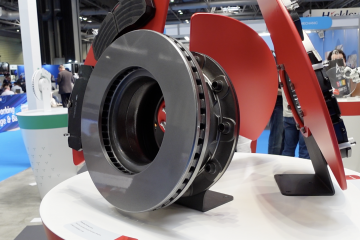A worrying number of motorists are deferring essential tyre safety checks and replacements in order to save money, despite October being Tyre Safety month.
Research commissioned by IAM Roadsmart earlier in October highlighted a large number of drivers are putting off essential maintenance. One in 10 of those surveyed said they had also put off replacing a tyre when the tread is low, while 7% said they have put off making a tyre change due to a puncture.
This means that of the almost 36 million people with a full driving licence in the UK, up to 4.2 million drivers are possibly deferring critical tyre safety maintenance, while up to 2.5 million motorists are potentially putting off fixing a puncture.
Tyre safety month 2022
October is traditionally Tyre Safety Month, an initiative run by automotive charity TyreSafe. This year, the organisation is pointing out that tyres are the most often overlooked part of vehicle maintenance. Yet they are a very decisive factor in preventing serious accidents.
Latest figures from the Department for Transport (DfT) show that 153 people are killed or seriously injured in incidents related to tyre defects, underlining the potential risks of skipping tyre checks.
TyreSafe has also highlighted the tragic case of Megan Byrne, who was just 22 years old when she lost control of her car due to underinflated tyres. Despite her best efforts, she collided with a car coming in the opposite direction and died at the scene. Police collision investigators confirmed that Megan and the driver she collided with were both driving within the speed limit and wearing a seat belt at the time – it was her tyres’ condition that was the major contributory factor in the tragic outcome.
As part of this year’s Tyre Safety Month, TyreSafe is asking drivers to once again consider the potential risks involved in not carrying out vital checks on their tyres.
The question being asked this year, If your tyres don’t stop you, what will? not only reminds the motorist of the benefits and importance of tyre checks but also carries the literal message that, as the only point of contact between the road and the vehicle, it is tyres which are crucial for safe and effective braking and cornering. It is a question that can be put to customers when a low-tread or defective tyre is found.
Asking this question may also highlight to drivers the importance of tyre safety, and the need to realise that while saving money is crucial in some areas, ensuring a vehicle is safe for everyday use is not an area anyone should be scrimping in.
Neil Greig, Director of Policy and Research at IAM RoadSmart, commented: “Our research has laid bare that far too many motorists have decided to put off potentially critical maintenance on their tyres.
“While we recognise the financial issues many motorists will be facing during such difficult times, taking a chance with your tyres is simply not worth the risk when your own, and other road users’ safety is at risk.
“Furthermore, failing to replace tyres that need to be replaced could let motorists down financially in the long term. Indeed, investing in tyres with a high specification, which are appropriate for the season, will help with your vehicle’s fuel economy. This will help motorists save money in the long run – especially when this is accompanied with more economical driving habits.”
ACT now with TyreSafe’s campaign
To educate drivers on the importance and benefits of tyre safety, TyreSafe has developed impactful depictions of scenarios which highlight the potential risk of driving on defective tyres.
The campaign incorporates the powerful acronym ‘ACT – Air pressure, Condition, Tread’ to further imprint the three elements of basic tyre safety checks on the driver into all video and printed assets.
Air Pressure – correct tyre pressures are shown on a sticker in your car’s door shut, filler cap or in the owner’s manual. Use an accurate pressure gauge to ensure they are right for the load as part of your pre-journey planning
Condition – if stones or other objects caught between grooves in the tread can be removed without damaging the tyre, drivers are advised to do so. Bulges, cracks, cuts and embedded objects are cause for concern and need to be checked by a professional
Tread – if you don’t have access to an accurate tread depth gauge, a 20p coin can be used to see if your tyres’ tread depths are approaching the 1.6mm minimum limit. Insert the 20p at several points across and around each tyre. If you can see the coin’s outer rim at any point the tyre may be illegal and you should seek advice from a professional.
Those wishing to support this year’s campaigns will find a range of assets under the ‘For supporters’ section of tyresafe.org. Materials include videos and images to be used on social media. As part of the resources and brand new for this year, TyreSafe has also produced a range of interactive posters, which can be viewed and displayed on a variety of screens and will be especially well placed in reception areas.
Official TyreSafe supporters can also access further assets, including customisable print-ready files, via the members’ area. To access this, supporters are asked to complete a registration form which theteam@tyresafe.org will approve. Then they simply use their login details to download the materials, which can be customised with their organisation’s logo using our handy online tool. Visit TyreSafe.org for more information.



